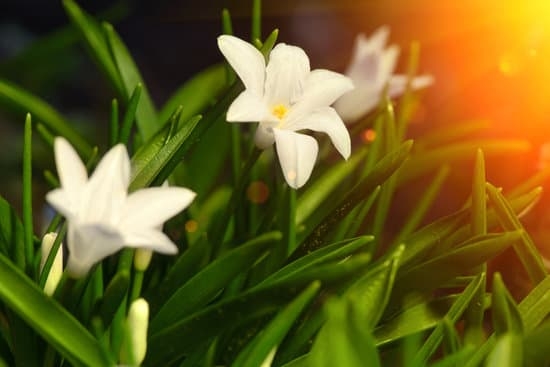Container gardening is a popular and rewarding way to bring greenery and life to any space, especially in a state like Texas with its unique climate challenges. In this article, we will explore various container gardening ideas for Texas, offering tips and tricks for successful gardening in this environment.
Texas’ diverse climate, ranging from hot summers to mild winters, presents both opportunities and challenges for container gardening. By choosing the right plants and containers, as well as implementing proper care techniques, you can create a thriving container garden that enhances your outdoor space.
Whether you have a small balcony in Houston or a spacious patio in Austin, container gardening allows you to customize your garden to suit your space and style. From selecting the best plants for the Texas climate to designing a visually appealing container garden, we will cover everything you need to know to create a successful container garden in the Lone Star State.
Best Plants for Container Gardening in the Texas Climate
When it comes to container gardening in Texas, choosing the right plants is crucial for success. The hot and often dry climate of Texas presents unique challenges, but also opportunities for growing a variety of plants in containers. Here are some of the best plant options that thrive in the Texas climate:
- Succulents: One of the most popular choices for container gardening in Texas due to their ability to withstand heat and drought conditions. Some great options include agave, sedum, and echeveria.
- Herbs: Herbs like rosemary, thyme, basil, and oregano are well-suited for container gardening in Texas. They not only add flavor to your dishes but also have aromatic foliage that can enhance your outdoor space.
- Ornamental Grasses: Native grasses like muhly grass or Gulf Coast muhly are excellent choices for adding texture and movement to your container garden while requiring minimal maintenance.
In addition to these plants, vegetables like tomatoes, peppers, and eggplants can also thrive in containers with proper care and attention. When selecting plants for your Texas container garden, consider the amount of sunlight available in your space, as well as the specific watering needs of each plant. With a little planning and creativity, you can create a beautiful and productive container garden tailored to the unique climate of Texas.
Choosing the Right Containers for Texas Container Gardens
When it comes to choosing the right containers for your container gardening in Texas, there are a few key factors to consider. First and foremost, you’ll want to ensure that your containers have good drainage. The hot and sometimes humid climate in Texas can lead to overwatering if the containers do not allow excess water to escape. This can be especially important during the summer months when plants may require more frequent watering.
In addition to drainage, you’ll also want to consider the size of the container. Larger containers tend to hold moisture better than smaller ones, which can be beneficial during dry spells or when temperatures soar. Additionally, larger containers provide more space for plant roots to grow, allowing them to establish themselves more effectively.
One popular option for container gardening in Texas is using self-watering containers. These innovative containers have a reservoir at the bottom that allows plants to draw up water as needed, reducing the risk of both under and overwatering. Self-watering containers can be especially useful during hot Texas summers when plants may require more consistent moisture levels.
| Container Type | Advantages |
|---|---|
| Terra Cotta Pots | Classic look; good drainage; |
| Plastic Containers | Lightweight; retain moisture; |
| Self-Watering Containers | Reduce risk of over/underwatering; great for hot climates; |
Soil and Fertilizer Tips for Successful Container Gardening in Texas
When it comes to container gardening in Texas, soil and fertilizer play a crucial role in the success of your plants. Texas is known for its hot and dry climate, which can have an impact on the nutrients available to your container plants.
To combat these challenges, it is important to choose the right type of soil for your containers. Look for high-quality potting mixes that are specifically designed for container gardening, as they are well-draining and moisture-retentive.
In addition to using the proper soil mix, fertilizing your container plants regularly is essential in Texas. The heat can quickly deplete nutrients from the soil, so supplementing with fertilizer will help keep your plants healthy and thriving. Consider using a slow-release fertilizer or organic options to provide a steady supply of nutrients throughout the growing season. Be sure to follow the instructions on the fertilizer packaging to avoid over-fertilizing, which can be harmful to your plants.
Another tip for successful container gardening in Texas is to periodically check the pH levels of your soil. Most plants prefer a slightly acidic soil pH level, so testing and adjusting as needed can promote optimal growth.
Keep in mind that different plants have varying nutrient requirements, so it may be beneficial to research specific fertilization guidelines for the types of plants you are growing in your containers. With proper attention to soil quality and fertilization practices, your container garden in Texas is sure to flourish with healthy and vibrant plants all season long.
Watering Techniques for Container Plants in Texas
Understanding the Texas Climate
One of the key factors to successful container gardening in Texas is understanding the unique climate of the state. With hot summers and sporadic rainfall, it’s important to pay close attention to watering your container plants. The intense heat can quickly dry out the soil in containers, making regular watering crucial for plant health. Additionally, the type of plants you choose will also impact their water needs, so it’s essential to tailor your watering schedule accordingly.
Implementing Proper Watering Techniques
To ensure your container plants thrive in Texas, consider implementing drip irrigation systems or self-watering containers. These systems can help maintain consistent moisture levels in the soil, which is especially beneficial during the scorching summer months.
When hand watering your plants, be sure to water deeply and allow excess water to drain out of the bottom of the container to prevent root rot. It’s also helpful to water early in the morning or late in the evening to reduce evaporation and ensure maximum absorption by the plants.
Monitoring and Adjusting Your Watering Schedule
Regularly monitoring your container plants is essential for adjusting your watering schedule as needed. Check the moisture levels in the soil by sticking your finger a few inches down – if it feels dry, it’s time to water. During periods of extreme heat or drought, you may need to increase the frequency of watering.
Conversely, during cooler months or rainy seasons, you may need to scale back on watering to avoid overwatering. By staying attentive and responsive to your plants’ needs, you can help them thrive in their Texas container garden environment.
Container Garden Design Ideas for Texas Yards and Patios
Container gardening in Texas can open up a world of possibilities when it comes to design ideas for your yards and patios. With the right plants, containers, and creativity, you can create a beautiful and functional space that thrives in the Texas climate. Here are some design ideas to inspire your Texas container garden:
Vertical Gardens
For small spaces like balconies or patios, vertical gardens can be a great way to maximize your planting area. Consider using wall-mounted planters or hanging baskets to create a lush green wall of foliage. Plants like herbs, succulents, and trailing flowers are perfect for vertical gardens and can add a touch of nature to any outdoor space.
Colorful Container Combinations
Incorporating colorful containers into your garden design can add visual interest and personality to your outdoor space. Mix and match different shapes, sizes, and colors of containers to create a dynamic look. Plant vibrant flowers like zinnias, petunias, or marigolds alongside foliage plants for a striking display that will brighten up any corner of your yard.
Theme Gardens
Consider creating themed container gardens that reflect your personal style or interests. For example, you could plant a salsa garden with tomatoes, peppers, cilantro, and onions in colorful pots for a fun and functional twist. Or create a butterfly garden with nectar-rich flowers like lantana, pentas, and milkweed to attract these beautiful pollinators to your yard. Theme gardens can be both visually appealing and practical in providing fresh produce or attracting beneficial insects.
With these design ideas in mind, you can let your creativity run wild when planning your container garden in Texas. Whether you have limited space on a patio or ample room in a backyard, there are endless possibilities for creating a beautiful and thriving container garden that suits your individual style and needs.
Dealing With Common Pests and Diseases in Texas Container Gardens
Dealing with common pests and diseases is an essential aspect of maintaining a successful container garden in Texas. The warm and humid climate of the state can create ideal conditions for various harmful insects and plant diseases to thrive. However, with the right knowledge and proactive measures, gardeners can effectively manage these issues and ensure the health and vitality of their container plants.
One of the most common pests that gardeners in Texas may encounter is aphids. These small insects feed on plant sap and can cause damage by stunting growth and spreading diseases. To combat aphids in your container garden, consider using natural remedies like neem oil or insecticidal soap. These organic solutions are safe for both plants and beneficial insects but effective at controlling aphid populations.
Another pest that can wreak havoc on container plants in Texas is spider mites. These microscopic pests typically appear as tiny red or black dots on leaves, causing discoloration and webbing. To prevent spider mite infestations, make sure to regularly inspect your plants for any signs of these pests. If detected early, you can use a strong blast of water to dislodge them from the leaves or introduce predatory insects like ladybugs to help control the population.
It is also crucial to keep an eye out for common plant diseases such as powdery mildew, leaf spot, and root rot in your Texas container garden. To minimize the risk of these diseases affecting your plants, practice good sanitation by removing any infected leaves or plants promptly.
Additionally, consider using disease-resistant plant varieties when planning your container garden. Proper watering techniques, adequate air circulation, and ensuring proper drainage in your containers can also help prevent the spread of diseases among your plants.
| Pests | Control Methods |
|---|---|
| Aphids | Neem oil or insecticidal soap |
| Spider Mites | Strong water blast or predatory insects like ladybugs |
| Common Diseases | Disease-resistant plant varietiesand good sanitation practices (removing infected parts) |
Harvesting and Enjoying the Fruits of Your Container Gardening Labor in Texas
Once you have taken the time to carefully plant, nurture, and care for your container garden in Texas, it’s time to reap the rewards of your hard work. Harvesting fresh produce from your containers can be a rewarding experience, especially when you get to enjoy the fruits of your labor on your plate. Here are some tips for harvesting and enjoying the bounty of your container garden:
- Harvest regularly: It’s important to regularly harvest ripe fruits and vegetables from your container garden to encourage further growth. Make sure to check your plants daily for any produce that is ready to be picked.
- Enjoy fresh flavors: One of the biggest advantages of growing your own fruits and vegetables in containers is the opportunity to enjoy fresh, flavorful produce right at home. Whether you’re picking herbs for seasoning or tomatoes for salads, savor the taste of freshly harvested ingredients.
- Get creative in the kitchen: With a variety of herbs, vegetables, and even fruits at your disposal from your container garden, let your culinary creativity shine. Experiment with new recipes or simply enhance classic dishes with homegrown ingredients.
As you continue to harvest from your Texas container garden throughout the season, remember that proper care and maintenance are key to ensuring a bountiful harvest. By staying attentive to watering needs, monitoring for pests and diseases, and providing adequate sunlight and nutrients, you can enjoy a successful container garden full of delicious produce that reflects the unique flavors of Texas.
Remember that container gardening in Texas offers endless possibilities for growing a wide range of plants no matter how much space you have available. With some careful planning and attention to detail, you can create a thriving container garden that not only beautifies your outdoor space but also provides an abundance of fresh ingredients for you to enjoy throughout the growing season.
So roll up your sleeves, get ready to harvest your crops, and revel in the joys of container gardening in Texas.
Conclusion
Container gardening in Texas offers a versatile and rewarding way to cultivate plants, even in limited spaces or challenging climates. By selecting the right plants, containers, soil, and watering techniques, gardeners can successfully grow a variety of herbs, vegetables, and flowering plants right on their own patios or balconies. Whether you are a beginner or seasoned gardener, there are endless container gardening ideas for Texas that can suit your personal style and preferences.
When it comes to choosing plants for your Texas container garden, opt for varieties that thrive in the heat and humidity of the region. Some excellent choices include herbs like rosemary and basil, vegetables like tomatoes and peppers, as well as colorful flowers like lantana and zinnias. These plants not only add beauty to your outdoor space but also provide a bountiful harvest for you to enjoy throughout the growing season.
In conclusion, container gardening can truly thrive in the unique environment of Texas with proper planning and care. By following the tips outlined in this guide on selecting plants, containers, soil, watering techniques, garden design ideas, pest management strategies, and harvesting practices tailored to Texas conditions – you can create a flourishing container garden that brings joy and abundance to your outdoor living space. So go ahead and unleash your creativity with container gardening ideas for Texas – the possibilities are endless.
Frequently Asked Questions
What Potted Plants Are Good for Texas Heat?
Some potted plants that are well-suited for the Texas heat include succulents like agave, yucca, and cacti. These plants have adapted to thrive in hot and dry conditions, making them perfect choices for a sunny Texan patio or garden.
What Plants Can Take Full Sun and Heat?
Plants that can handle full sun and heat well include lavender, ornamental grasses like fountain grass or liriope, and lantana. These plants not only tolerate the intense sunlight and high temperatures but also add beauty to any outdoor space with their colorful blooms or foliage.
What Are the Best Low Maintenance Outdoor Potted Plants?
When it comes to low-maintenance outdoor potted plants, options like snake plant, ZZ plant, and pothos are excellent choices. These plants require minimal care and watering, making them perfect for busy individuals or those who may not have a green thumb.
Additionally, herbs such as rosemary or mint can thrive in pots with little maintenance needed during the growing season.

Welcome to my gardening blog! I am passionate about plants and enjoy sharing my knowledge and experiences with others. In this blog, I will write about everything related to gardening, from tips on how to get started to updates on my own garden projects.





